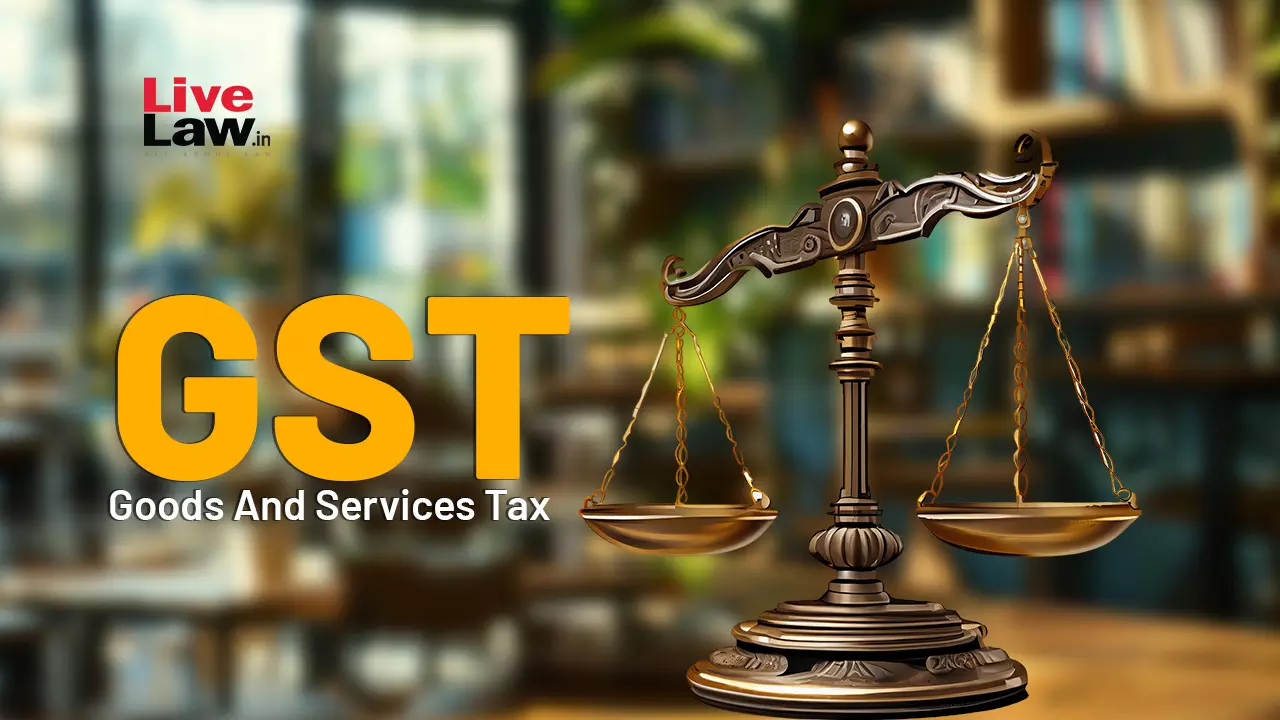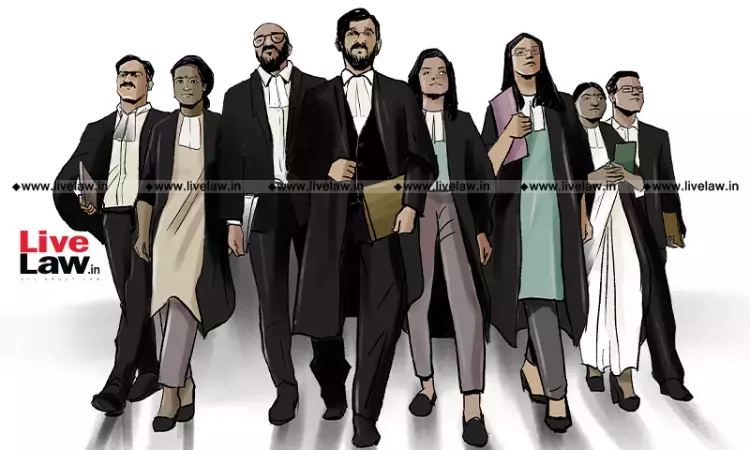[Debate] A Reply To The Article "Immediate Post-Retirement Appointment of Judges: Mutual Bonhomie between Executive And Judiciary?"
![[Debate] A Reply To The Article "Immediate Post-Retirement Appointment of Judges: Mutual Bonhomie between Executive And Judiciary?" [Debate] A Reply To The Article "Immediate Post-Retirement Appointment of Judges: Mutual Bonhomie between Executive And Judiciary?"](https://www.livelaw.in/cms/wp-content/uploads/2018/07/AK-Goel-RK-Agarwal-P-Sathasivam-Arun-Jaitley.jpg)
Soon after retirement, Justice RK Agrawal was appointed the President of the National Consumer Disputes Redressal Commission. The day before his retirement, Justice AK Goel was appointed the Chairperson of the National Green Tribunal. Manu Sebastian criticizes these appointments as being reflective of a "mutual bonhomie between Executive and Judiciary". [1]Sebastian argues that all...
Soon after retirement, Justice RK Agrawal was appointed the President of the National Consumer Disputes Redressal Commission. The day before his retirement, Justice AK Goel was appointed the Chairperson of the National Green Tribunal. Manu Sebastian criticizes these appointments as being reflective of a "mutual bonhomie between Executive and Judiciary". [1]
Sebastian argues that all these appointments took place within a short span of the retirements of these judges, which "…certainly casts a cloud over judicial decisions rendered during their tenure in cases involving stakes of the respective governments…" Sebastian proceeds to illustrate his premise by reference to the Court's decision in Rojer Mathew v. South Indian Bank Ltd.,[2] where Goel, J. was the Presiding Judge. Reference is made to the submission of the Amicus Curiae in that case as to how "tribunals should not be heaven for retired persons…". The suggestion is obvious. Goel, J.'s recent appointment is itself symptomatic of the malaise depicted in Rojer Mathew (supra).
Sebastian then mentions Agrawal J.'s role in dismissing the PIL that questioned RK Asthana's appointment as CBI Special Director. Agrawal, J. was also responsible for dismissal of CJAR's PIL for an investigation into Prasad Education Trust case.[3] Sebastian continues by referring to Agrawal, J. participation in the Constitution Bench that decided the "master of roster" issue.[4] He concludes on this basis that Agrawal, J. "had dealt with cases involving stakes of the Central Government and the Chief Justice of India". With this, Sebastian dismisses Agrawal J.'s appointment by asserting, "a dispassionate observer cannot be faulted for doubting the presence of bias in the judicial process leading to these judgments in the light of the immediate post-retirement assignment given to the judge…" Sebastian states that his only endeavor is to "underline the fact that immediate post-retirement assignments of the said judges create a cloud over the sanctity of those judgments…" In his article, Sebastian also refers to the appointment of Justice Antony Dominic as the Chairman, State Human Rights Commission. Reference in passing is also made to Justice P. Sathasivam who was appointed as the Governor of Kerala, post-retirement. The trigger is obviously however, the appointments of Agrawal and Goel, JJ. and I propose to only deal with them.
Before dealing with Sebastian's attacks, for fun (if not necessity), a few digressive words on the judicial habits of the two gentlemen named by Sebastian.
I have not seen a Judge more reluctant than Goel, J., in the grant of adjournments. He carried the reluctance far. During his tenure as a Presiding Judge, there was the unprecedented notation in his individual cause-lists cautioning against prayers for adjournments. He was polite but difficult to persuade. He did not particularly care for the stature of counsel. He thus had the distinction of being disliked both by juniors and seniors. His very vices were his virtues.
If Judges could run, Agrawal, J. would come first. It is impossible for even Registrar courts to have beaten Agrawal, J. in speed. It was not for lack of preparation but seemingly, too much of it. He was liberal in the grant of adjournments but always busy. He was not indecisive. Lawyers resent voluble Judges - being voluble, after all, is a lawyer's prerogative. Agrawal, J., appeared to have taken this to heart. He was so soft-spoken that during his puisne days, remained nearly "unspoken". It takes more than softness though to bear the brunt of a brother Judge's abuse. As a Chief Justice of the Madras High Court, Agrawal, J. suffered this dubious honour.[5]
Let me now go back to Sebastian's thematic point as to Judges currying favour with the Executive. Goel J.'s appointment as the NGT Chairman is Sebastian's immediate cause for consternation. By the end of his tenure, Goel, J. has come to be widely known for three judgments he authored. In Rajesh Sharma v. State of UP,[6] he drew up guidelines for criminal cases invoking Section 498-A, IPC, perceiving the provision as a tool for avoidable harassment. In Krishna Veni Nagam v. Harish Nagam,[7] video conferencing was recommended for matrimonial disputes to obviate the hardship of physical presence of parties at each hearing. In Dr. Subhash Kashinath Mahajan v. State of Maharashtra[8] he judicially imposed proscriptions to limit abuse of the SC/ST (Prevention of Atrocities) Act, 1989. Through each of these judgments, Goel, J. stoked controversy and disaffection leading to reconsideration and review. Krishna Veni (supra) has been narrowly overruled,[9] while Rajesh Sharma (supra) seems to be well on its way to reconsideration.[10] The judgment in Dr. Subhash Kashinath Mahajan (supra) was denounced by no less than the Attorney General.[11] Despite public outcry and condemnation by all concerned, the judgment was not stayed on review by the Bench presided by this Judge.
An "executive-minded" Judge may find it difficult to say this: "I hold that primacy of the Judiciary and limited role of the Executive in the appointment of Judges is part of the basic structure of the Constitution." But this was Goel, J.'s opinion in SCAORA v. UOI,[12] (the NJAC Case), in which he concurred to strike down the NJAC amendments. What is Sebastian talking about?
But in this instance, Sebastian's aim at Goel, J., is one of expedience rather than accuracy. Goel, J.'s plight in Sebastian's article is on account of the recency of his appointment. Goel, J.'s participation in Rojer Mathew (supra) serves Sebastian's effort at irony. But it fails to substantiate the charge made by him.
Sebastian's attack against Agrawal, J. requires a more careful examination, if only for the reason that more cases have been cited evidencing Agrawal, J.'s apparent executive bias. A study of Common Cause v. UOI,[13] shows that the challenge to Asthana's appointment as CBI's Special Director was canvassed on the basis that Asthana was possibly involved with persons accused of crimes (Sterling Biotech and Sandesara Group of Companies). The PIL petitioner argued that Asthana was therefore unsuitable for appointment as CBI's Special Director. But, the Selection Committee for appointment did not find any substance in the allegations and recommended Asthana's name. The Court declined to interfere, observing, inter alia:
"17. …this Court, in Mahesh Chandra Gupta v. Union of India [Mahesh Chandra Gupta v. Union of India, (2009) 8 SCC 273] has highlighted the fact that there is vital difference between judicial review and merit review…….
- We cannot question the decision taken by the Selection Committee which is unanimous and before taking the decision, the Director, CBI, had participated in the discussions and it is based on relevant materials and considerations…..."
The issue with CJAR v. UOI & Ors.,[14] is different. In the frame captured by Sebastian, the decision-making and decisions reflect of Agrawal, J.'s "executive mindedness". I admit that no aspect of CJAR's case (supra) serves to provide a happy account of the Court's functioning. But I find it difficult to conflate the Court's conundrums with mastering its roster and rostering its master with "executive mindedness".
Sebastian also describes CJAR's Case (supra) as a case involving stakes for the Chief Justice of India. The suggestion is that the recent appointment to NCDRC is, therefore, a reward. This is a serious charge. But it is watered down by Sebastian himself, who disclaims immediately by stating, "this is not to suggest, even remotely, that their judgments are wrong or biased". If that is not even the "remote suggestion" made by Sebastian, what is the purpose of the oblique reference?
The allegation of bias is easy to make. It is difficult to prove. One it is cast, it, however, clouds the mind. The recent years have seen numerous instances where the judicial sincerity of the Coram has been doubted. In re: Dangwimsai Pul,[15] it was alleged that Goel, J., was predisposed favorably towards the then Chief Justice of India, JS Khehar.[16] This apprehension caved with the withdrawal of the letter (writ petition) in question. In Tehseen Poonawala v. UOI,[17] recusal of both AM Khanwilkar and DY Chandrachud, JJ. was adventurously explored. The basis was possible acquaintance with the four Maharashtra Judges whose statements were being considered. The recusal was not however pressed.
Sebastian found it easy to cite Agrawal J.'s decision in Common Cause (supra) as reflective of executive bias. Was Chelameswar, J. similarly biased in upholding the NJAC amendments in SCAORA (supra)? After all, he was the only Judge to uphold the amendment. Were Five Judges biased against the Central Government in deciding the recent case of Government of NCT of Delhi v. UOI?[18] Cases are decided every day by Courts. When does one attribute motives to Judges for such decisions?
Sebastian rounds up the discussion with the declarations of Chelameswar, Kurian Joseph, JJ. declining to taking up post-retirement government jobs. This is good personal morality. One can only commend it. But both the Consumer Protection Act, 1986, and the National Green Tribunal Act, 2010, require the apex tribunals to be presided by a Judge from the Supreme Court.[19] A Constitution Bench of the Court in Union of India v. Madras Bar Assn.,[20] has reiterated that the presence of a judicial member in a tribunal is necessary. There is thus a constitutional morality that tribunals can be headed only by Judges.
Sebastian concedes as much when he states, "most statutory commissions/tribunals require to be headed by retired judges of the Supreme Court or High Court." He then recommends that there should have been a "cooling off", as mooted by retired CJIs Kapadia, Lodha and Thakur. It is idle to bandy the notion of a "cooling off" period where the statutes in question fix the age of retirement as 70 years. Applying the logic of a "cooling off" period, qualified Judges would become suitable for appointment to tribunals on the eve of their disqualification. Innovation can afford to sound absurd. Criticism cannot.
Justice Sathasivam's appointment as Governor of Kerala was inopportune (though not unprecedented).[21] Sebastian's call for reforms or criticism of the Finance Act, 2017, while well-meaning, are inappropriately overextended in his article. It is easy to broad brush and tar a Judge's approach or activity as predicated on bias. Judges judge cases and lawyers judge Judges. Sometimes incorrectly. The eyes perceive only what the mind is prepared to comprehend.[22] Sebastian would perhaps say of the same of me. So, both sides need telling.
Note: We have not edited this Article[1] Manu Sebastian, "Immediate Post-Retirement Appointment of Judges: Mutual Bonhomie between Executive And Judiciary?", published on 07.07.2018 at: http://www.livelaw.in/immediate-post-retirement-appointment-of-judges-mutual-bonhomie-between-executive-and-judiciary/
[2] Judgment dated 07.05.2018 in SLP C No.15804/2017.
[3] CJAR v. UOI & Ors., WP Crl No.169/2017, judgment dated 01.12.2017.
[4] CJAR v. UOI & Anr., WP Crl No.1692017, judgment dated 10.11.2017.
[5] The Times of India: "Madras CJ writes to CJI against fellow judge's act" Published on 16.01.2016 https://www.thehindu.com/news/national/tamil-nadu/do-not-tarnish-high-court-image-says-outgoing-chief-justice/article5681110.ece
[6] Judgment dated 27.07.2017, SLP Crl No.2013/2017.
[7] (2017) 4 SCC 150.
[8] Judgment dated 20.03.2018, SLP Crl No.5661/2017.
[9] Santhini v. Vijaya Venkatesh, (2018) 1 SCC 1, Chandrachud, J., dissenting.
[10] See http://www.livelaw.in/sc-revisit-judgment-two-judge-bench-abuse-section-498a-ipc-read-petition/ , published 13.10.2017. The judgment is presently reserved: http://www.livelaw.in/plea-seeking-reconsideration-directions-498a-ipc-sc-reserves-judgment/, published 23.04.2018.
[11] See http://www.livelaw.in/march-20-judgment-is-a-judicial-amendment-to-sc-st-act-it-affected-the-morale-and-confidence-of-sc-st-community-ag-kk-venugopal/, published 03.05.2018.
[12] (2016) 5 SCC 1
[13] WP (C) No.1088/2017, decided by judgment dated 28.11.2017.
[14] WP Crl No.169/2017.
[15] WP Crl No.30/2017.
[16] Published on 23.02.2017: http://www.livelaw.in/kalilkho-pul-suicide-note-wife-withdraws-letter-sc-objecting-hearing-judicial-side-choice-bench/
[17] WP C No.19/2018, decided by judgment dated 19.04.2018.
[18] CA No.2357/2017, judgment dated 04.07.2018.
[19] In the case of the NGT, Section 5(1) also contemplates the qualification of Chief Justice of a High Court.
[20] (2010) 11 SCC 1
[21] Avijit Chatterjee, "Stormy Sinecures", published 24.09.2014 at https://www.telegraphindia.com/1140924/jsp/opinion/story_18866574.jsp:
"The first instance of a Supreme Court judge being made a governor is that of Justice Fathima Beevi who was appointed Governor of Tamil Nadu in 1997. Earlier, in 1959, Bombay High Court Chief Justice M.C. Chagla resigned from office to become the ambassador to the US. In 1968, sitting Chief Justice of India Subba Rao resigned to contest the election to the office of the President but lost. In 1970, retired Chief Justice of India M. Hidayatullah contested for the office of Vice-President and won. In 1973, Justice K.S. Hegde resigned as a judge of the Supreme Court, got elected as a member of the Lok Sabha and became its Speaker in 1977. In 1988, former Chief Justice of India Ranganath Mishra was appointed a Rajya Sabha MP by the Congress."
[22] Robertson Davies, "Tempest-Tost".




